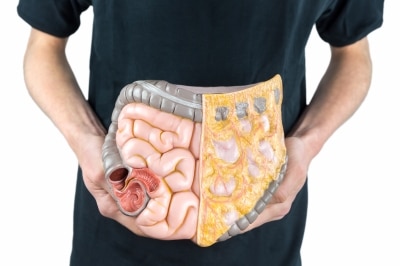The Anatomy
Chiropractic has become the most popular drug-free alternative healthcare because it is effective, safe and gentle. It respects the body’s natural healing ability and works with it, instead of suppressing normal responses.
The spine consists of 24 vertebrae plus the sacrum and coccyx. The nervous system consists of the brain, spinal cord and the nerves that connect the brain and spinal cord to every organ in the body. The nervous system is the center of all thoughts, memories, learning and consciousness. The organs all need a healthy nervous system to function properly and that starts with being able to communicate with the brain.
Communication through the Spinal Cord
If the brain wants the pinky to move, the “thought” must travel through the brain, through the spinal cord and out of the spinal cord. It exits at C7 vertebrae in most people, travels down that nerve to the pinky. Immediately the pinky moves, and when it does so, it “feeds back” the information of moving, touching an object or being too hot or cold, or too much pressure, etc., back to the brain. This two-way communication allows the brain to control almost everything in the body.
The spine has many joints and these joints move according to the muscles, tendons, ligaments and their structural health. As these joints fail to move as they should, people begin to experience different issues. Maybe they start having foot pain or notice their shoes wear unevenly. Or maybe their neck “cracks” on it’s own. Headaches can often come from tight muscles in the neck, and poor posture can change the way the muscles and joints move. As these issues are not addressed, they contribute to degeneration. Although degeneration of the joints can be permanent, a chiro near you can help to reduce, halt, and possibly reverse spinal degeneration by keeping the joints, nerves, and discs healthy.
The Underlying Cause
Firstly, a Chiro near you determines the underlying cause so the treatment is appropriate for the diagnosis. Pain can mean damage to bones, muscles, ligaments, tendons, nerves or discs. For instance, the injured tissue determines the treatment and occasionally the patient will have to be referred to another practitioner for treatment. In emergencies, the first responsibility is always controlling the life-threatening situations like hemorrhage, breathing problems, shock, stroke, open wounds, broken bones, etc. That is the specialty of emergency medicine. But for most injuries, chiropractors can manage and treat spinal issues, muscle damage, ligament stress, and disc problems.
Concurrent Problems
Second, is determining if there are other conditions contributing to the problem. If we adjust the spine to help “whiplash,” but there is a concurrent problem with plantar fasciitis (foot pain in the arch due to overstretched ligament), that foot dysfunction will affect healing. Imbalances in one body part can and will affect other body parts. For instance, imbalances in the feet can shift the hips, lower spine, upper spine and even the head.
Another example is working on the spine for low back pain while the patient has diabetes or high blood sugar. High blood sugar affects how the blood delivers nutrients and inflammation to all cells in the body, and waste products out of the body. Adjusting the spine will help, but the sugar will slow healing until the levels are reduced in the blood.
Alternative Medicine
Adjusting the spine is just the beginning. Exercises specific to the injury and follow up are crucial to ensure the body progresses from disease to ideal health. Diet changes may help speed healing. Chiropractors have helped millions of people with low back problems, often saving them from pain, drugs and surgery. This can make the difference between a life of health and ease and a life of pain and dis-ease.
Effective Treatment
Major government studies from the U.S. and Canada have reaffirmed what patients of chiropractors have been saying for years. In 1994, the federal government reported that chiropractic is one of the preferred and most effective methods for acute low back pain.1 Furthermore, bedrest of more than four days was harmful and muscle relaxants and surgery were often unnecessary.
The Manga Report studied in Canada, found that chiropractic care for low back pain is superior to medical care in terms of safety, effectiveness, cost and patient satisfaction. 2
“The higher satisfaction levels expressed by patients of chiropractors . . . offer an overwhelming case in favour of much greater use of chiropractic services in the management of low back pain . . . a very good case can be made for making chiropractors the gatekeepers for management of low-back pain in the worker’s compensation system.”2
“In two large reviews, manipulation decreased pain and improved range of motion in patients with chronic neck pain and . . . with acute and chronic back pain . . . more effectively than placebo and was as effective as non-steroidal anti-inflammatory drugs, home exercises, physical therapy . . . “ 3
The Road to Recovery
Acute Care
Most people after receiving chiropractic care will continue to attend adjustments for wellness care. Even if initially they started with chiropractic because of acute pain. During the acute phase of care the joints have scar tissue building around the tendons and muscles due to years of chronic subluxation. Adjustments don’t “hold” as long and the need for more frequent visits is evident.
Corrective Care
After the acute phase has passed, healing has begun and the spinal and structural degeneration has slowed or even halted. Corrective care helps the joints, ligaments, discs and other structures heal themselves while energy flows better between the brain and all of the organs. Therefore, adjustments will be less frequent and better function tends to last longer.
After the corrective care phase, the adjustments are “holding” longer and many of the problems caused by years of damage are healing and functioning better. This is when most patients begin to feel like they did before the injury and their stress decreases. Occasionally, they may even stop care at this point because they feel better. But there is another optional phase of care called “wellness care.”
Wellness Care
Wellness care optimizes the progress that has been made and keeps the body functioning at its optimal levels. The structures are balanced, the communication between the brain and organs is smooth, body functions are more fluid and sensitive.
Overall, you are able to live your best life, naturally. Wellness care is not considered “medically necessary” so insurance will not pay for these visits, but a small investment in health can yield huge dividends as the functional progress made is maintained by occasional office visits. If you wondered “can a chiro near me help,” now is the time to find out. Give us a call at (407) 716-6553
References
- Acute Low back problems in adults. Clinical Practice Guideline No. 14 U.S. Dept. of Health and Human Services. Public Health Service. Agency for Health Care Policy and Research, Rockville, MD. Dec. 1994; 30.
- Manga P et al. The effectiveness and cost-effectiveness of chiropractic management of low back pain. University of Ottawa, Canada. Pran Manga and Associates, 1993
- Arnold JJ, Ehleringer SR. Is spinal manipulation an effective treatment for low back pain? Yes: evidence shows benefit in most patient AM Fam Physician 2012: 85(8): 756 – 758
Subscribe To Our Newsletter
Join our mailing list to receive the latest news and updates from our team.


